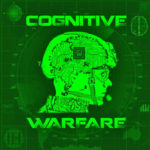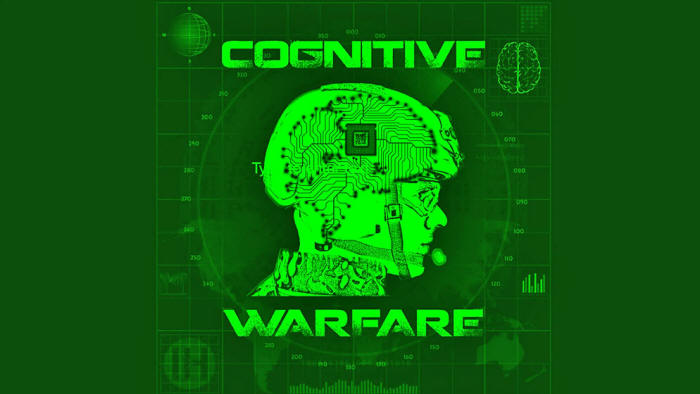Danny Casolero, an investigative reporter, was found by an alleged suicide in a motel room in West Virginia was researching a deep black operation that he referred to as the Octopus. Many feel that this was Not a Suicide.

![]()
by David Guyatt
From The Laissez Faire City Times
Vol 5, No 46
November 12, 2001
from TheCatBirdSeat Website
It is one of those stories that even the wildest novelists can’t properly imagine.
A group of well placed government bureaucrats and politicians, plus numerous CIA spooks and military covert ops types shake hands with the Mafia and agree to do business on the QT. This involves shaking-down very wealthy figures, dealing guns on the black market, money laundering and trafficking drugs on a world-wide scale. Along the way they bleed the assets of numerous banks, bankrupting many of them in the process. They also involve themselves in Masonic secret societies and pull unseen strings deep inside the Vatican.
And, of course, they organize a few political assassinations, invoke some random murders and set alight the fuse on dozens of major bombing events – just to add zest and confusion.
Everything is done in the name of “anti-communism,” and is conducted under the umbrella of “national security” — a designation that is sure to stifle any irksome police investigation that could otherwise lead to arrest and imprisonment. It also ensures their now decades old “business enterprise” will continue to prosper without any kind of oversight.
Welcome then, to the national security “”untouchables”” – a group of shadowy puppet-masters who practice organized crime on a global scale in the name of freedom and democracy — and who often possess marked Nazi sympathies.
Danny Casolaro, a freelance American journalist dubbed this group The Octopus. Casolaro was investigating them for their involvement in the October Surprise story, the theft of Inslaw Corporation’s smart software suite known as “PROMIS” and their connections to the Iran-Contra affair involving Lt. Col. Oliver North, as well as the collapse of BCCI, the global bank dubbed the Bank for Crooks & Criminals International.
According to Carol Marshall, an American writer, Casolaro told friends that he,
“had traced the Inslaw and related stories back to a dirty CIA ’Old Boy’ network that had begun working together in the 1950’s around Albanian covert operations.”
Marshall adds that,
“these men had gotten into the illegal gun and drugs trade back then and had continued in that business ever since.”
She adds that Casolaro was also investigating the Wackenhut Corporation — a leading international security firm based in Indio, California. Wackenhut Corp., began life, according to its own promotional literature, back in 1954 when a handful of FBI Special Agents decided to set-up a specialist company providing investigative services to business and industry.
But Marshall and Casolaro may well have been a few years out in their reckoning on the founding of the Octopus. There is persuasive evidence that the roots of this group date back to the war or immediate post-war years. There was certainly an accommodation reached between the Mafia and the US military by the time of the US led invasion of Sicily.
In exchange for Mafia help for the Sicily landing, Mafia kingpin, Lucky Luciano, was released from prison in the US for exile in Italy.
But the relationship between the US military and intelligence community and senior members of organized crime was far more deep-seated. Lt. Colonel Lucien Conein, a high-ranking CIA officer stationed in Saigon before and during the Vietnam war, also belonged to the Corsican underworld, the Union Corse.
This crime clan was responsible for the so called “French Connection” heroin shipments from Southeast Asia to Marseilles and then on to the United States during the Vietnam War era. Conein was so well connected to leaders of the Corsican underworld that when he left Vietnam, he was presented with a gold medallion embossed with the Napoleonic eagle and the Corsican crest. The medallion is traditionally worn by Corsican crime bosses to signify their seniority.
Conein is believed by some to have been the inspiration for the principal character in William Herrernan’s best selling novel, The Corsican. Meanwhile, earlier in his career, Conein had been an OSS liaison officer with the French resistance during WWII.
Meanwhile, it is a sad fact that the narcotics industry has been lurking behind almost every major — and most minor — wars over the past five decades.
The war in Southeast Asia that encompassed Vietnam, Cambodia, Laos and Thailand witnessed a vast explosion in Opium and Heroin trafficking — with the connivance of the CIA. Much of this resulted from the decision to covertly arm, at a cost, local warlords to fight in the battle against communism. In order to be able to buy these weapons, local military commanders took control of and increased Opium production in their region. This was then exchanged for weapons and the Opium found its way to the US and Europe.
The guns for dope model that developed during the Vietnam war proved effective elsewhere, too. Similar structures were later developed in Afghanistan, El Salvador and even up to and including Kosovo — where the NATO backed KLA trafficked heroin.
But the Octopus does not limit itself to just guns and drugs — even though these two do generate spectacular profits. According to Carol Marshall, there is evidence of an old and deep involvement in chemical and biological (CB) weapons that may date back to WWII and the secret Japanese Unit 731 that developed CB weapons in Manchuria.
This connection also revealed, Marshall discovered, the Octopus connection to the Yakuza — Japan’s notorious underworld — in the form of Robert Booth Nichols.
Nichols repeatedly appears in Marshall’s manuscript because of his apparent relationship to organized crime syndicates and Mafia front organizations. Nichols, however, is also a member of the CIA, a fact he admitted on the witness stand during a 1993 trial for false arrest. Threatening to subpoena a list of highly placed government officers in his defense, the trial Judge, Thomas C. Murphy, ruled a mistrial.
Meanwhile, Nichols continued to maintain a very close association with Harold Okimoto, Nichols Godfather and member of the Board of Directors of First Intercontinental Development Corporation (FIDCO) — a firm in which Nichols was a principle. Okimoto, meanwhile is alleged to have been a high ranking Japanese intelligence officer during WWII — a post invariably given to senior members of the Yakuza.
One of the principal persons providing inside information to Carol Marshall was Michael Riconsciuto – a CIA scientific whiz kid imbued with marked intellectual abilities who ostensibly worked for the Wackenhut Corporation.
Riconsciuto, who had been close to Robert Booth Nichols for twenty years, visited a top secret facility with him. This was located at Alice Springs in Australia and housed, according to Riconosciuto a,
“city of sorts, containing sophisticated communications equipment, laboratory equipment and other items that he would not define.”
This facility was “privately owned” Riconosciuto told Marshall, adding that what he had seen there “made him realise it was time to terminate his relationship with Robert Booth Nichols.”
Riconosciuto refused to say what it was that caused his dismay during his Australian trip, but author Carol Marshall believed it had something to do with bio weapons that he’d worked on and which might have had a bearing on Gulf War Syndrome. This illness is said to have subterranean connections to HIV AIDS and is rumored to have resulted from the illegal field-testing on allied troops of an experimental AIDS vaccine during the Gulf war. Were a commercial company to have found and successfully tested an AIDS vaccine, the potential profits they could earn would be enormous.
Likewise, the development of a genetically modified killer disease possesses potential for profits also. During one of her last interviews with Riconosciuto, Carol Marshall pressed the CIA scientist to explain his involvement in developing a genetically engineered biological weapon during his time at Wackenhut.
- Riconoscituo explained that he had worked on a “military concept where you can engineer these biological agents…….you see, a specific penetration group can be immunized, and everybody else dies.”
- Riconosciuto, meanwhile, was the first to claim years ago that a race specific biological weapon had been developed. At the time his claims received short shrift. We now know, however, that the Israeli’s have indeed been developing such a device as have the South Africans. Nor can the allegations of an HIV AIDS bio-weapon be written off as fantasy.
- Dr. Wouter Bassoon – head of South Africa’s military covert weapons program — who has been dubbed the “Doctor of Death” by the South African media, is said to have been involved in the use of the AIDS virus against enemies by using “infected blood” in “an operation.”
Bassoon is also charged with trafficking in Ecstacy and Mandrax tablets, money laundering, the illegal administration of truth serum, conspiracy to murder and murder. Dr. Bassoon had admitted that his activities were based on a US chemical & biological weapons program.
“I must confirm that the structure of the project was based on the U.S. system. That’s where we learnt the most,” he said.
Meanwhile, the serpentine connections between South African security forces and leading figures from the realm of organized crime during the Apartheid era, can only serve to reinforce the incredible reach and depth of the Octopus.
How the Octopus gets it profits
A typical scam revolves around the most popular arms for drugs cycle.
Weapons purchased years before by the Pentagon are acquired by the Octopus at “book value” — meaning the cost of purchase for, say, 1980 when an assault rifle might then have had a price tag of $300 each. In 1990, this cost could easily have risen to $600 each. By acquiring the 1980 stock at $300 per rifle, the Octopus could sell it to their “client” for, say, for $700 each — including shipping – thereby making a handsome profit of $400 each.
In order to replenish its stock of rifles, the Pentagon arranges to purchase the current model weapon at the prevailing price — making the tax-payer the loser.
The second leg of the arrangement sees the Octopus contract to purchase the “clients” supply of drugs. The purchase price is set well below street value, but sufficient for the client to be able to afford to purchase the arms needed. The drugs are then “cut” and distributed and, naturally, generate immense additional profits at the street level.
In this manner, each leg of the transaction makes a bountiful profit. The last part of the jigsaw is to launder the illegal profits through the banking system and then invest part of the proceeds into bona fide businesses.
US Grandees of the octopus
CIA whiz-kid Michael Riconosciuto told author Carol Marshall that the US government “sanctioned” met laboratories in Fresno, Madera and Mariposa County in California.
Marshall had been earlier involved in an investigation in Mariposa County that involved Police Sergeant Roderick Sinclair of the Mariposa Sheriff’s Department. Sinclair, had according to a number of witnesses been a long-term user of drugs had, while on duty, veered the car he was driving across the road and hit another car. Inside were three US Secret Service men who were all killed outright.
What grabbed Carol Marshall’s attention, however, was the way the Judge in the subsequent trial appeared to cover-up Sinclair’s drug habit. The author later realized that a “tentacle of the Octopus had slithered into Mariposa County” when she discovered that Rod Sinclair’s father, Colonel Sinclair, had been a military attaché to General Douglas MacArthur during WWII — and later supervised training of Japanese in intelligence methods.
MacArthur and members of his team have long been associated with the Octopus — perhaps because of the General’s role as Japan’s “Shogun” after WWII and the inevitable contacts created with the Japanese crime clans, the Yakuza.
It has recently been revealed that MacArthur appears to have personally benefited from war loot plundered by the Japanese and later secretly recovered by the OSS and the CIA. This was in the form of gold bullion accounts set-up in MacArthur’s name by the OSS/CIA officer Santa Romana.
Warfare – each side is set to bleed the other for profit
During hearings in 1987, the Senate Sub Committee on Terrorism, Narcotics & International Operations revealed a series of “secret memo’s” written by General Paul F. Gorman who as head of “Southern Command” commanded the US military presence in South America during the 1980’’s.
Gorman had written:
“There is not a single group in unconventional warfare that does not use narcotics to fund itself.”
He was referring to the US backed Contra’s supported by Colonel Oliver North and the national Security Council of the US. This was the tip of the iceberg, however. Every conflict from Vietnam on through Lebanon, Afghanistan, Croatia and Kosovo has relied on the guns for drugs equation operated by the Octopus.
One very senior Pentagon source described how this came about to author Monica Jensen-Stevenson:
“What started out in Vietnam as a neat way to find money to fund covert operations had developed into a huge industry. The men and women who are involved, maybe they can’t get off the merry-go-round. Maybe it keeps spinning faster and faster, they make more and more money, and even if they wanted to duck out, they can’t.”
Theodore Shackley, one of the key CIA figures involved in covert operation since Vietnam described in his book The Third Way that low intensity conflicts are not really fought to be won but to bleed both sides so as to maximize black market commerce and to secretly field test new weapons and techniques on a “training battlefield.”
The Head of the Octopus?
In her book The Last Circle, author Carol Marshall outlines an international company, First Intercontinental Development Corporation (FIDCO) that she said led her “straight to the head of the octopus.”
She then lists the Board of Directors of FIDCO who included Robert Maheu Snr, right hand man of Mob and CIA-connected Howard Hughes and Robert Booth Nichols, self-confessed CIA agent with powerful Mafia affiliations. Among others on the board were Michael McManus, former assistant to President Reagan and Clint Murchison Jnr., owner of the Dallas Cowboys NFL football team.
The latter is the son of Clint Murchison Snr., who was one of the motivating factors behind General Douglas MacArthur’s failed Presidential attempt in 1952. Muchison senior was also closely associated at this time with Richard Nixon, who later became US President and had financial dealings with him that involved Jimmy Hoffa, a Mafia figure connected to the Teamsters Union.
Others who were close friends of Murchison senior included FBI chief, J. Edgar Hoover.
That Clint Muchison senior had dealings with the Mafia is undisputed. For example, 20% of the Murchison Oil Lease Company was owned by Gerardo Catena, a leading lieutenant of the Genovese crime family. Of interest, too, are Murchison’s Texas connections.
Investigative journalist, Pete Brewton, in his book The Mafia, CIA & George Bush, ties former President George Bush to leading Mafia figures in Texas. . . .
Related Reports
- The Last Circle, an unpublished manuscript by Carol Marshall, which investigates the so-called “Octopus“.
OBITUARIES
Honolulu Star-Bulletin
October 15, 1996
Harold T. Okimoto, 71, of Honolulu, retired business consultant and former president of Island Tobacco, died Saturday in St. Francis Hospital.
He is survived by wife Clara Y.; sons Blake T. and Bruce T.; brothers Thomas T. and Fred T.; sisters Hideko Nagatoshi and Sadako Okimoto. Memorial service: 8 p.m. Friday at Hosoi Garden Mortuary. Casual attire. No flowers.

by John Connolly
Additional reporting by Erzc Reguly, Margie Sloan and Wendell Smith
SPY Magazine – Volume 6
Sept 1992
from TheCatBirdSeat Website
What? A big private company – one with a board of former CIA, FBI and Pentagon officials; one in charge of protecting Nuclear-Weapons facilities, nuclear reactors, the Alaskan oil pipeline and more than a dozen American embassies abroad; one with long-standing ties to a radical ring-wing organization; one with 30,000 men and women under arms – secretly helped IRAQ in its effort to obtain sophisticated weapons?
And fueled unrest in Venezuela?
This is all the plot of a new best-selling thriller, right? Or the ravings of some overheated conspiracy buff, right?
Right?
WRONG!
In the WINTER OF 1990, David Ramirez, a 24 year-old member of the Special Investigations Division of the Wackenhut Corporation, was sent by his superiors on an unusual mission.
Ramirez a former Marine Corps sergeant based in Miami, was told to fly immediately to San Antonio along with three other members of SID-a unit, known as founder and chairman George Wackenhut’s “private FBI,” that provided executive protection and conducted undercover investigations and sting operations. Once they arrived, they rented two gray Ford Tauruses and drove four hours to a desolate town on the Mexican border called Eagle Pass.
There, just after dark, they met two truck drivers who had been flown in from Houston. Inside a nearby warehouse was an 18 -wheel tractor-trailer, which the two truck drivers and the four Wackenhut agents in their rented cars were supposed to transport to Chicago.
“My instructions were very clear,” Ramirez recalls. “Do not look into the trailer, secure it, and make sure it safely gets to Chicago.”
It went without saying that no one else was supposed to look in the trailer, either, which is why the Wackenhut men were armed with fully loaded Remington 870 pump-action shotguns.
The convoy drove for 30 hours straight, stopping only for gas and food. Even then, one of the Wackenhut agents had to stay with the truck, standing by one of the cars, its trunk open, shotgun within easy reach.
“Whenever we stopped, I bought a shot glass with the name of the town on it,” Ramirez recalls. “I have glasses from Oklahoma City, Kansas City, St. Louis.”
A little before 5:00 on the morning of the third day, they delivered the trailer to a practically empty warehouse outside Chicago.
A burly man who had been waiting for them on the loading dock told them to take off the locks and go home, and that was that. They were on a plane back to Miami that afternoon. Later Ramirez’s superiors told him-as they told other SID agents about similar midnight runs-that the trucks contained $40 million worth of food stamps. After considering the secrecy, the way the team was assembled and the orders not to stop or open the truck, Ramirez decided he didn’t believe that explanation.
Neither do we. One reason is simple: A Department of Agriculture official simply denies that food stamps are shipped that way. “Someone is blowing smoke,” he says.
Another reason is that after a six-month investigation, in the course of which we spoke to more than 300 people, we believe we know what the truck did contain-equipment necessary for the manufacture of chemical weapons – and where it was headed: to Saddam Hussein’s Iraq.
And the Wackenhut Corporation – a publicly traded company with strong ties to the CIA and federal contracts worth $200 million a year – was making sure Saddam would be getting his equipment intact.
The question is why.
In 1954, George Wackenhut, then a 34-year old former FBI agent, joined up with three other former FBI agents to open a company in Miami called Special Agent Investigators Inc. The partnership was neither successful nor harmonious – George once knocked partner Ed Dubois unconscious to end a disagreement over the direction the company would take – and in 1958, George bought out his partners.
However capable Wackenhut’s detectives may have been at their work, George Wackenhut had two personal attributes that were instrumental in the company’s growth.
First, he got along exceptionally well with important politicians.
He was a close ally of Florida governor Claude Kirk, who hired him to combat organized crime in the state; and was also friends with Senator George Smathers, an intimate of John F. Kennedy’s.
It was Smathers who provided Wackenhut with his big break when the senator’s law firm helped the company find a loophole in the Pinkerton law, the 1893 federal statute that had made it a crime for an employee of a private detective agency to do work for the government.
Smathers’s firm set up a wholly owned subsidiary of Wackenhut that provided only guards, not detectives. Shortly thereafter, Wackenhut received multimillion-dollar contracts from the government to guard Cape Canaveral and the Nevada nuclear-bomb test site, the first of many extremely lucrative federal contracts that have sustained the company to this day.
The second thing that helped make George Wackenhut successful was that he was, and is, a hard-line right-winger. He was able to profit from his beliefs by building up dossiers on Americans suspected of being Communists or merely left-leaning-“subversives and sympathizers,” as he put it-and selling the information to interested parties.
According to Frank Donner, the author of “Age of Surveillance“, the Wackenhut Corporation maintained and updated its files even after the McCarthyite hysteria had ebbed, adding the names of antiwar protesters and civil-rights demonstrators to its list of “derogatory types.”
By 1965, Wackenhut was boasting to potential investors that the company maintained files on 2.5 million suspected dissidents-one in 46 American adults then living. In 1966, after acquiring the private files of Karl Barslaag; a former staff member of the House Committee on Un-American Activities, Wackenhut could confidently maintain that with more than 4 million names, it had the largest privately held file on suspected dissidents in America.
In 1975, after Congress investigated companies that had private files, Wackenhut gave its files to the now-defunct anti-Communist Church League of America of Wheaton, Illinois. That organization had worked closely with the red squads of big-city police departments, particularly in New York and L.A., spying on suspected sympathizers; George Wackenhut was personal friends with the League’s leaders, and was a major contributor to the group. To be sure, after giving the League its files, Wackenhut reserved the right to use them for its clients and friends.
Wackenhut had gone public in 1965 ; George Wackenhut retained 54 percent of the company. Between his salary and dividends, his annual compensation approaches $2 million a year, sufficient for him to live in a $20 million castle in Coral Gables, Florida, complete with a moat and 18 full-time servants. Today the company is the third-largest investigative security firm in the country, with offices throughout the United States and in 39 foreign countries.
It is not possible to overstate the special relationship Wackenhut enjoys with the federal government. It is close. When it comes to security matters, Wackenhut in many respects “is” the government. In 1991, a third of the company’s $600- million in revenues came from the federal government, and another large chunk from companies that themselves work for the government, such as Westinghouse.
Wackenhut is the largest single company supplying security to U.S. embassies overseas; several of the 13 embassies it guards have been in important hotbeds of espionage, such as Chile, Greece and El Salvador.
It also guards nearly all the most strategic government facilities in the U.S., including the Alaskan oil pipeline, the Hanford nuclear-waste facility, the Savannah River plutonium plant and the Strategic Petroleum Reserve.
Wackenhut maintains an especially close relationship with the federal government in other ways as well.
While early boards of directors included such prominent personalities of the political right as Captain Eddie Rickenbacker; General Mark Clark and Ralph E. Davis, a John Birch Society leader, current and recent members of the board have included much of the country’s recent national-security directorate:
- former FBI director Clarence Kelley
- former Defense secretary and former CIA deputy director Frank Carlucci
- former Defense Intelligence Agency director General Joseph Carroll
- former U.S. Secret Service director James J. Rowley
- former Marine commandant P. X. Kelley
- acting chairman of President Bush’s foreign- intelligence advisory board and former CIA deputy director Admiral Bobby Ray Inman
Before his appointment as Reagan’s CIA director, the late William Casey was Wackenhut’s outside legal counsel.
The company has 30,000 armed employees on its payroll. We wanted to know more about this special relationship; but the government was not forthcoming. Repeated requests to the Department of Energy for an explanation of how one company got the security contracts for nearly all of America’s most strategic installations have gone unanswered.
Similarly, efforts to get the State Department to explain whether embassy contracts were awarded arbitrarily or through competitive bidding were fruitless; essentially, the State Department said, “Some of both.”
Wackenhut’s competitors – who, understandably, asked not to be quoted by name – have their own version.
“All those contracts;” said one security-firm executive, “are just another way to pay Wackenhut for their clandestine help.”
And what is the nature of that help?
“It is known throughout the industry,” said retired FBI special agent William Hinshaw, “that if you want a dirty job done, call Wackenhut.”
We met George Wackenhut in his swanky, muy macho offices in Coral Gables.
The rooms are paneled in a dark, rich rosewood, accented with gray-blue stone. The main office is dominated by Wackenhut’s 12-foot-long desk and a pair of chairs shaped like elephants – “Republican chairs,” he calls them-complete with real tusks, which, the old man says with some amusement, tend to stick his visitors.
The highlight of the usual collection of pictures and awards is the Republican presidential exhibit: an autographed photo of Wackenhut shaking hands with George Bush (whom Wackenhut, according to a former associate, used to call “that pinko”) as well as framed photos of Presidents Reagan, Nixon and Bush, each accompanied by a handwritten note.
The chairman looks every inch the comfortable Florida septuagenarian. The day we spoke, his clothing ranged across the color spectrum from baby blue to light baby blue, and he wore a lot of jewelry – a huge gold watch on a thick gold band, two massive gold rings.
But Wackenhut was, at 72, quick and tough in his responses. Near the end of our two-and-a-half hour interview, when asked if his company was an arm of the CIA, he snapped, “No!”
Of course, this may just be a matter of semantics.
We have spoken to numerous experts, including current and former CIA agents and analysts, current and former agents of the Drug Enforcement Administration and current and former Wackenhut executives and employees, all of whom have said that in the mid-197O’s, after the Senate Intelligence Committee’s revelations of the CIA’s covert and sometimes illegal overseas operations, the agency and Wackenhut grew very, very close.
Those revelations had forced the CIA to do a housecleaning, and it became CIA policy that certain kinds of activities would no longer officially be performed. But that didn’t always mean that the need or the desire to undertake such operations disappeared.
And that’s where Wackenhut came in.
Our sources confirm that Wackenhut has had a long-standing relationship with the CIA, and that it has deepened over the last decade or so. Bruce Berckmans, who was assigned to the CIA station in Mexico City, left the agency in January 1975 (putatively) to become a Wackenhut international-operations vice president.
Berckmans, who left Wackenhut in 1981, told SPY that he has seen a formal proposal George Wackenhut submitted to the CIA to allow the agency to use Wackenhut offices throughout the world as fronts for CIA activities.
Kichard Babayan, who says he was a CIA contract employee and is currently in jail awaiting trial on fraud and racketeering charges, has been cooperating with federal and congressional investigators looking into illegal shipments of nuclear-and-chemical-weapons – making supplies to Iraq.
“Wackenhut has been used by the CIA and other intelligence agencies for years,” he told SPY. “When they [the CIA] need cover, Wackenhut is there to provide it for them.”
Canadian prime minister Pierre Trudeau was said to have rebuffed Wackenhut’s effort in the 1980’s to purchase a weapons propellant manufacturer in Quebec with the remark “We just got rid of the CIA – we don’t want them back.”
Phillip Agee, the left-wing former CIA agent who wrote an expose’ of the agency in 1975, told us, “I don’t have the slightest doubt that the CIA and Wackenhut overlap.”
There is also testimony from people who are not convicts, renegades or Canadians.
William Corbett, a terrorism expert who spent 18 years as a CIA analyst and is now an ABC News consultant based in Europe, confirmed the relationship between Wackenhut and the agency.
“For years Wackenhut has been involved with the CIA and other intelligence organizations, including the DEA,” he told SPY. “Wackenhut would allow the CIA to occupy positions within the company [in order to carry out] clandestine operations.”
He also said that Wackenhut would supply intelligence agencies with information, and that it was compensated for this- “in a quid pro quo arrangement,” Corbett says – with government contracts worth billions of dollars over the years.
We have uncovered considerable evidence that Wackenhut carried the CIA’s water in fighting Communist encroachment in Central America in the 1980s (that is to say, during the Reagan administration when the CIA director was former Wackenhut lawyer William Casey, the late superpatriot who had a proclivity for extralegal and illegal anti-Communist covert operations such as Iran-contra).
In 1981, Berckmans, the CIA agent turned Wackenhut vice president, joined with other senior Wackenhut executives to form the company’s Special Projects Division. It was this division that linked up with ex-CIA man John Phillip Nichols, who had taken over the Cabazon Indian reservation in California, as we described in a previous article [“Badlands,” April 1992], in pursuit of a scheme to manufacture explosives, poison gas and biological weapons – and then, by virtue of the tribe’s status as a sovereign nation, to export the weapons to the contras.
This maneuver was designed to evade congressional prohibitions against the U.S. government’s helping the contras. Indeed, in an interview with SPY, Eden Pastora, the contras’ famous Commander Zero, who had been spotted at a test of some night-vision goggles at a firing range near the Cabazon reservation in the company of Nichols and a Wackenhut executive, offhandedly identified that executive, A. Robert Frye, as “the man from the CIA.”
(In a subsequent conversation he denied knowing Frye at all; of course, in that same talk he quite unbelievably denied having ever been a contra.)
In addition to attempted weapons supply, Wackenhut seems to have been involved in Central America in other ways. Ernesto Bermudez who was Wackenhut’s director of international operations from 1987 to ’89, admitted to SPY that during 1985 and ’86 he ran Wackenhut’s operations in El Salvador, where he was in charge of 1,500 men.
When asked what 1 ,500 men were doing for Wackenhut in El Salvador, Bermudez replied coyly, “Things.”
Pressed, he elaborated: “Things you wouldn’t want your mother to know about.”
It’s worth noting that Wackenhut’s annual revenues from government contracts–the alleged reward for cooperation in the government’s clandestine activities – increased by 150 million, a 45 percent jump, while Ronald Reagan was in office.
“You’ve done an awful lot of research, George Wackenhut said to me as I was leaving. “How would you like to run all our New York operations?”
If that was the extent of Wackenhut’s possible involvement in a government agency’s attempt to circumvent the law, then we might dismiss it as an interesting footnote to the overheated, cowboy anti-Communist 1980s.
However, the U.S. Attorney for the Southern District of Florida has been conducting an investigation into the illegal export of dual-use technology-that is, seemingly innocuous technology that can also be used to make nuclear weapons to Iraq and Libya. And SPY has learned that Wackenhut’s name has come up in the federal investigation, but not at present as a target.
Between 1987 and ’89, three companies in the United States received investments from an Iraqi architect named Ihsan Barbouti. The colorful Barbouti owned an engineering company in Frankfort that had a $552 million contract to build airfields in Iraq. He also admitted having designed Mu’ammar Qaddafi’s infamous German-built chemical- weapons plant in Rabta, Libya.
According to an attorney for one of the companies in which Barbouti invested, the architect owned $100 million worth of real estate and oil-drilling equipment in Texas and Oklahoma.
He may also be dead, there being reports that he died of heart failure in Hospital in London on July 1, 1990, his 63rd birthday. Barbouti, however, had faked his death once before, in 1969, after the Ba’ath takeover in Iraq which brought Saddam Hussein to power as the second-in-command. That time, Barbouti escaped Iraq; resurfacing several years later in Lebanon and Libya. There are no reports that he is living in Jordan – or, according to other reports, in a CIA safe house in Florida.
Those reports can be considered no better than rumor; what follows, though, is fact.
As reported on ABC’s “Nightline” last year, the three companies in which Barbouti invested were TK-7 of Oklahoma City, which makes a fuel additive; Pipeline Recovery Systems of Dallas, which makes an anti-corrosive chemical that preserves pipes; and Product Ingredient Technology of Boca Raton, which makes food flavorings. None of these companies was looking to do business with Iraq; Barbouti sought them out.
Why was he interested?
- because TK-7 had formulas that could extend the range of jet aircraft and liquid-fueled missiles such as the SCUD
- because Pipeline Recovery knows how to coat pipes to make them usable in nuclear reactors and chemical-weapons plants
- because one of the by- products in making cherry flavoring is ferric ferrocyanide, a chemical that’s used to manufacture hydrogen cyanide, which can penetrate gas masks and protective clothing
Hydrogen cyanide was used by Saddam Hussein against the Kurds in the Iran-Iraq war.
Barbouti was more than a passive investor, and soon he began pressuring the companies to ship not only their products but also their manufacturing technology to corporations he owned in Europe, on which, he told the businessmen, it would be sent to Libya and Iraq.
In doing so, Barbouti was attempting to violate the law.
- First, the U.S. forbade sending anything to Libya, which was embargoed as a terrorist nation
- Second, the U.S. specified that material of this sort must be sent to its final destination, not to an intermediate locale, where the U.S. would risk losing control of its distribution
According to former CIA contract employee Richard Babayan, in late 1989 Barbouti met in London with Ibrahim Sabawai, Saddam Hussein’s half brother and European head of Iraqi intelligence, who grew excited about the work Pipeline Recovery was doing and called for the company’s technology to be rushed to Iraq, so that it could be in place by early 1990.
And the owner of TK-7 swears that Barbouti told him he was developing an atom device for Qaddafi that would be used against the U.S. in retaliation for the 1986 U.S. air strike against Libya.
Barbouri also wanted the ferrocyanide from Product Ingredient.
Assisting Barbouti with these investments was New Orleans exporter Don Seaton, business associate of Richard Secord, the right-wing U.S. Army general turned war profiteer who was so deeply enmeshed in the Iran-contra affair.
It was Secord who connected Barbouti with Wackenhut.
Barbouti met with Secord in Florida on several occasions, and phone records show that several calls were placed from Barbouti’s office to Secord’s private number in McLean, Virginia; Secord has acknowledged knowing Barbouti. He is currently a partner of Washington businessman James Tully (who is the man who leaked Bill Clinton’s draft-dodge letter to ABC) and Jack Brennan, a former Marine Corps colonel and longtime aide to Richard Nixon both in the White House and in exile.
Brennan has gone back to the White House, where he works as a director of administrative operations in President Bush’s office. He refused to return repeated calls from SPY.
Interestingly, Brennan and Tully had previously been involved in a $181 million business deal to supply uniforms to the Iraqi army. Oddly, they arranged to have the uniforms manufactured in Nicolae Ceaucescu’s Romania.
The partners in that deal were former U.S. attorney general and Watergate felon John Mitchell and Sarkis Soghanalian, a Turkish-born Lebanese citizen.
Soghanalian, who has been credited with being Saddam Hussein’s leading arms procurer and with introducing the demonic weapons inventor Gerald Bull to the Iraqis, is currently serving a six-year sentence in federal prison in Miami for the illegal sale of 103 military helicopters to Iraq.
According to former Wackenhut agent David Ramirez, the company considered Soghanalian “a very valuable client.”
Unfortunately for Barbouti, none of the companies in which he made investments was willing to ship its products or technology to his European divisions. That, however, doesn’t necessarily mean that he didn’t get some of what he wanted.
In 1990, 2,000 gallons of ferrocyanide were found to be missing from the cherry-flavor factory in Boca Raton. Where it went is a mystery; Peter Kawaja, who was the head of security for all of Barbouti’s U.S. investments, told SPY,
“We were never burglarized, but that stuff didn’t walk out by itself.”
What does all this have to do with Wackenhut?
Lots: According to Louis Champon, the owner of Product Ingredient Technology, it was Wackenhut that guarded his Boca Raton plant, a fact confirmed by Murray Levine, a Wackenhut vice president.
Champon also says, and Wackenhut also confirms, that the security for the plant consisted of one unarmed guard. While a Wackenhut spokesperson maintains that this was the only job they were doing for Barbouti, he also says that they were never paid, that Barbouti stiffed them.
This does not seem true. SPY has obtained four checks from Barbouti to Wackenhut. All were written within ten days in 1990:
- one on March 27 for $168.89
- one on March 28 for $24,828.07
- another on April 5 for $756
- the last on April 6 for $40,116.25
We asked Richard Kneip, Wackenhut’s senior vice president for corporate planning, to explain why a single guard was worth $66,000 a year; Kneip was at a loss to do so. He was similarly at a loss to explain a fifth check, from another Barbouti company to Wackenhut’s travel-service division in 1987, almost two years before Wackenhut has acknowledged providing security for the Boca Raton plant .
Two former CIA operatives, separately interviewed, have the explanation.
Charles Hayes, who describes himself as “a CIA asset ” says Wackenhut was helping Barbouti ship chemicals to Iraq.
“Supplying Iraq was originally a good idea,” he maintains, “but then it got out of hand. Wackenhut was just in it for the money.”
Richard Babayan the former CIA contract employee, confirmed Hayes’s account.
He says that Wackenhut’s relationship with Barbouti existed before the Boca Raton plant opened:
“Barbouti was placed in the hands of Secord by the CIA, and Secord called in Wackenhut to handle security and travel and protection for Barbouti and his export plans.”
Wackenhut, Babayan says was working for the CIA in helping Barbouti ship the chemical-and-nuclear-weapons-making equipment first to Texas, then to Chicago, and then to Baltimore to be shipped overseas.
All of which makes the story of the midnight convoy ride of David Ramirez, recounted at the beginning of this article rather less mysterious. SPY has learned that this shipment is now the subject of a joint USDA-Customs investigation.
When we asked George Wackenhut what was being shipped from Eagle Pass to Chicago, the sharp, straightforward chairman at first claimed they were protecting an unnamed executive. He then directed an aide to get back to me.
Two days later, Richard Kneip did, repeating the tale that had been passed on to David Ramirez – that the trucks contained food stamps. We told him that we had spoken to a Department of Agriculture official, who informed us that food stamps are shipped from Chicago to outlying areas, never the other way around, and that food stamps, unlike money, are used once and then destroyed.
All Kneip would say then was, “We do not reveal the names of our clients.”
Wackenhut’s connection to the CIA and to other government agencies raises several troubling questions:
- First, is the CIA using Wackenhut to conduct operations that it has been forbidden to undertake?
- Second, is the White House or some other party in the executive branch working through Wackenhut to conduct operations that it doesn’t want Congress to know about?
- Third, has Wackenhut’s cozy relationship with the government given it a feeling of security-or worse, an outright knowledge of sensitive or embarrassing information-that allows the company to believe that it can conduct itself as though it were above the law?
A congressional investigation into Wackenhut’s activities in the Alyeska affair last November began to shed some light on Wackenhut’s way of doing business; clearly it’s time for Congress to investigate just how far Wackenhut’s other tentacles extend.
AND WHO OWN’S WAKENHUT?
- The #1 institutional stockholder is Britain’s Barclays Global Investors International (a key member of the Committee of 300).
- Other top stockholders (as if 03/31/01) include:
- Zurich Scudder
- Goldman Sachs
- Merrill Lynch
- Deutsche Bankers Trust
- And top purchasers (for the quarter ending 03/31/01) included:
- AXA
- Nomura Securities
- Harvard University
- Ohio State Public Employees Retirement System











